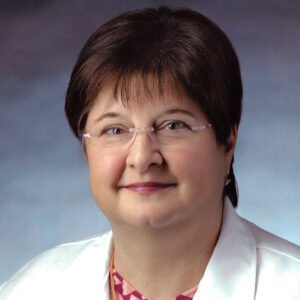See Corresponding Journal Article: RSV and HMPV in Infants and Children
By Santa J. Bartholomew M.D. FAAP, FCCM & Betsy Kastak, DNP, RN, C-PNP
The human papilloma virus (HPV) is common in everyday life. There are over 200 types of HPV, over 40 occurring in the anal and genital tract. Most people infected with HPV are asymptomatic. Risk of HPV transmission is extremely low during childbirth. In toddler and school-aged children, this can at times be a sign of sexual abuse and should be thoroughly investigated. At birth, approximately 5 % of neonates are born HPV positive. Young children are more vulnerable due to their less protective cervical mucosal layer and ectropion of cervix. This is when the cervical cells are on the outside, rather an inside. After puberty, this changes, giving them more protection against sexually transmitted infections.
Typical Presentation:
A young school-aged child presents with mild discomfort during voiding. The child is brought into the primary care provider as the mother notices “pimples” in her vaginal area. The providers performs a full physical exam and notices a cauliflower like appearance of multiple lesions in her vaginal area. The child is otherwise healthy and denies any vaginal bleeding or discharge. No voiding dysfunction or urinary incontinence is observed. The child often complains of discomfort and irritation of her underwear rubbing in her vaginal area. The parent denies any inappropriate contact. She is school-aged and bathes approximately twice per week. The mother states she typically cares for herself and she does not routinely help her bathe or wipe her bottom during bathroom times. The child also attends daycare and if often cared for by grandparents as well.
Did you know HPV could also occur in the respiratory tract? This characteristically presents at a later age. Classically, the child has been previously diagnosed and treated for asthma. Two different strains, 6 and 11 typically cause this type of disease. Most cases progress as the disease worsens. In rare cases, these can become cancerous. Symptoms include difficulty breathing, stridor, and hoarseness. Diagnosis requires a bronchoscope with a biopsy. Surgical intervention to remove the growths and antiviral medication can help as the disease worsens. Laser ablation therapy has also been trialed in some rare cases. In some instances, the child may require a tracheostomy.
Examination:
The medical provider must complete a thorough exam and history to fully evaluate the extent of the lesions. Photos can be helpful in determining stage of lesions and ruling out other dermatology conditions. Ruling out sexual abuse in age is essential. It is important the type of condyloma is biopsied and pathology is completed. Perinatal vertical transmission also needs to be considered, again in most cases if the child is under 3-5 years of age. There can be a late onset incubation time period. Past records and documentation needs to be thoroughly reviewed. Maternal history is also important to note.
A pediatric surgery team, including pediatric urology and/or a child advocacy specialist should evaluate and document meticulously. Direct visualization and the use of a hysteroscope or cystoscopy should evaluate both external and internal vaginal and urethral openings. Condyloma should be removed if these obstruct the urethra. Liquid nitrogen or imiquimod can also be used to remove the lesions. A biopsy should be performed, and hemostasis well achieved when excised.
Follow Up:
Social work and child protective services should have initial contact, follow-up with both the immediate, and extended family. A police report should be filed if the nature of the incident is deemed reportable. Dependent on the situation, follow-up should also be initiated with any daycare facilities. Approximately half of the cases will resolve without any initial management. Ongoing evaluation and follow up is important as lesions can re-appear and repeat treatment may be necessary.
If you think your child or a child you care for have been affected by HPV or other abnormal lesions are discovered, PME can assist in proper diagnosis and follow up care. Our dedicated pediatric team are experts in evaluation, treatment protocols, and ascertain the optimal management for your child.





